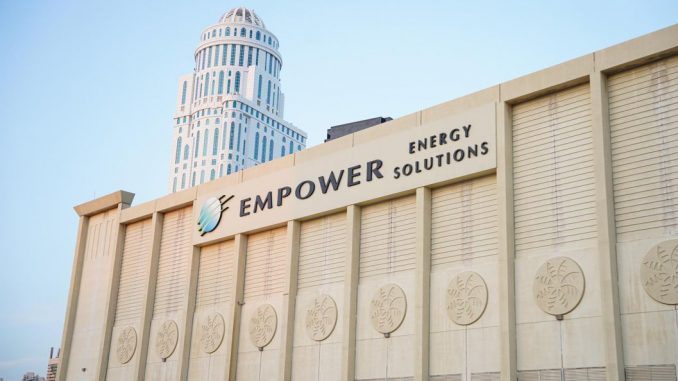
The United Arab Emirates is recognised globally for its rapid urban growth, modern infrastructure and commitment to sustainability. District cooling in the UAE plays a major role in all three of those areas.
As temperatures often exceed 45°C in summer, air conditioning is a fundamental necessity. However, traditional cooling systems consume vast amounts of electricity and water – posing major challenges for energy efficiency and environmental conservation.
To address this, the UAE has become a regional and global leader in district cooling – a centralised, energy-efficient method of air conditioning that aligns with the country’s sustainability vision.
What is district cooling?
District cooling is a system that produces chilled water at a central plant and distributes it through a network of insulated underground pipes to multiple buildings.
The chilled water is used in building air conditioning systems, and the return water is then re-cooled at the central plant.
This centralised approach contrasts with conventional systems, where each building has its own chiller units. District cooling offers improved efficiency, reduced carbon emissions and lower operational costs.
It is particularly beneficial in large developments such as residential communities, commercial complexes and industrial zones. Why cool individual units when you can temperature control entire areas from a central source?
The rise of district cooling in the UAE
The UAE was one of the first countries in the Middle East to embrace district cooling on a large scale. The system aligns with national energy strategies such as UAE Vision 2031, Dubai Clean Energy Strategy 2050 and Abu Dhabi Economic Vision 2030.
All of these strategies emphasise sustainable growth and reduced carbon footprints. Some of the UAE’s leading district cooling providers include:
- Empower (Emirates Central Cooling Systems Corporation): The world’s largest district cooling services provider. Their portfolio includes serving areas such as Business Bay, Jumeirah Beach Residence, Dubai International Financial Centre and providing air conditioning for the Burj Khalifa.
- Tabreed (National Central Cooling Company): Based in Abu Dhabi, Tabreed operates across the GCC region and provides cooling for landmark projects including the Sheikh Zayed Grand Mosque, Yas Island, and Dubai Metro.
- Emicool and Palm Utilities: Key players in providing district cooling to large-scale developments like Dubai Investments Park and Palm Jumeirah.
Environmental and economic benefits
District cooling brings multiple advantages that support the broader sustainability agenda of the UAE. Systems can be up to 50 percent more energy efficient than conventional air conditioning. Centralised production allows for optimised equipment performance and better load management.
The reduced power consumption of district cooling translates into lower greenhouse gas emissions, helping the UAE move closer to its Net Zero by 2050 goal.
End users benefit from lower maintenance and replacements costs as central district cooling plants handle most of the operational burden.
If for example a chilled water cooling system pipe repair was needed, it would be down to the district cooling supplier to fix the problem rather than residents or businesses.
Advanced technologies like treated sewage effluent (TSE) for cooling towers further reduce the strain on freshwater resources.
And there are aesthetic benefits to consider too. Districting cooling means buildings in the UAE are not blighted by bulky rooftop chillers and equipment.
It gives architects more flexibility when designing buildings, whilst also reducing noise pollution through the removal of loud exterior units.
Challenges for district cooling in the UAE and future outlook
Whilst the benefits of district cooling are significant, the sector does face challenges in the UAE. There are high initial capital costs, the need for extensive underground infrastructure and often tariff regulation complexities.
However, government policies and incentives continue to support the expansion of district cooling as a national priority.
Looking forward, technological innovation is expected to enhance system efficiency. AI-driven energy management, thermal storage and renewable integration all offer the potential to improve district cooling.
With the UAE positioned as a world leader in district cooling, it can use its experience to help other hot-climate nations introduce systems for balancing their own urban development with sustainability.
District cooling and sustainable urban infrastructure
District cooling has transformed how the UAE manages its energy-intensive cooling demands, setting a benchmark for sustainable urban infrastructure.
By integrating efficiency, innovation, and environmental stewardship, district cooling initiatives in the UAE reflect the country’s broader vision:
Building smarter, greener and more resilient cities for the future.

Leave a Reply